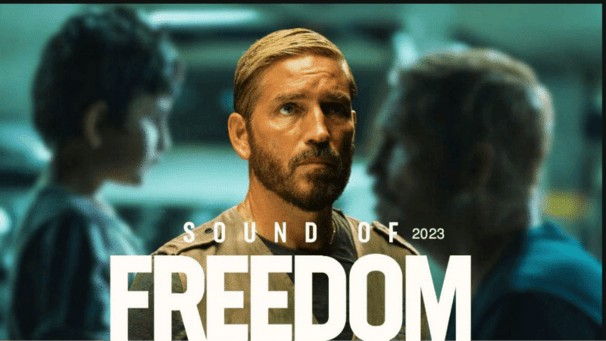Let’s cut through the bullshit right now. You think you know the story. A creepy house with those stupid quarter-moon windows, a family running for their lives, and a demonic pig named Jodie. But the real story behind The Amityville Horror film is more terrifying, more manipulative, and more downright American than any special effect Hollywood could ever cook up.
This isn’t just another true crime horror story; it’s a masterclass in how a real-life massacre can be packaged, sold, and twisted into a global phenomenon. We’re going to tear down the legend, brick by bloody brick. We’re exposing the foundation of the Ronald DeFeo Jr. murders, the convenient hauntings that followed, and how a single book and a blockbuster The Amityville Horror film forever blurred the line between fact and fiction, making it one of the most debated real events inspiring horror films in history.
Buckle up. We’re driving to 112 Ocean Avenue.
Why We’re Still Terrified: The Unshakeable Power of a “True Story”
Why does The Amityville Horror film still claw at our subconscious 45 years later? It’s simple: the marketing was a work of genius. Before the internet could fact-check in real-time, the promise that this actually happened was a psychological nuclear bomb. The studio didn’t just sell a movie; they sold a nightmare you could theoretically buy on Zillow.
The tagline was a sucker punch: “For God’s Sake, Get Out!” And the kicker? “Based on a true story.” That phrase bypasses your logical brain and taps directly into a primal fear. It’s the reason you double-check your locks after watching it. It’s the reason the real-life haunted house located in Amityville, New York became a tourist trap for the morbidly curious. The origin story gave the story plenty of credence, and the filmmakers wielded that credibility like a weapon. They knew that the idea of your own home turning against you is the ultimate American anxiety.
What REALLY Happened Before the Cameras Rolled: The Blood-Soaked Truth
To understand the film, you have to confront the brutal reality that made it possible. Forget the ghosts for a minute. On November 13, 1974, a


Ronald “Butch” DeFeo Jr., high on heroin and rage, took a .35-caliber rifle and executed his entire family—his parents and four siblings—as they slept in their beds. The DeFeo Jr. shot his parents and four siblings in a cold-blooded act that left six dead. The trial was a media circus, with DeFeo offering a pathetic defense about a non-existent hitman before finally settling on a claim that “voices in the house” told him to do it. Sound familiar? This is the grim, undeniable truth. The Long Island horror house was, first and foremost, a slaughterhouse.
How a Family’s Nightmare Became a National Obsession
Enter George and Kathleen Lutz. In December 1975, this new property was sold for a song, and the Lutzes, a blended family with three kids, scooped it up. They knew the history. They claimed they weren’t afraid.
Then, their infamous 28-day ordeal began. According to their account, a rash of incidents occurred in the house that defied all explanation:
- Green slime oozed from the walls.
- Kathleen Lutz was levitated from her bed.
- They found the infamous Red Room Amityville—a hidden, claustrophobic cellar space painted red that pulsed with evil.
- George underwent a horrifying transformation, growing cold, distant, and physically resembling a past occupant.
The clincher? The involvement of Father Ralph J. Pecoraro. The Lutzes claimed that when the priest came to bless the haunted house, a demonic voice roared, “GET OUT!” and he was swarmed by flies, later breaking out in painful, oozing blisters. The testimony of a Catholic priest was the linchpin. It transformed their story from a weird anecdote into a spiritual battle, giving the public a hero to root for and a demon to fear.
How The Amityville Horror Film Weaponized Fear for the Masses
This is where the legend was forged in celluloid. The 1979 movie, directed by Stuart Rosenberg and starring James Brolin and Margot Kidder, took the Lutz’s story and injected it with Hollywood steroids.
WATCH THE TRAILER THAT LAUNCHED A THOUSAND NIGHTMARES RIGHT HERE:
trailer begins with a slow pan over a Look at that trailer. It’s a masterpiece of dread. The trailer begins with a slow pan over a peaceful neighborhood. The voiceover is ominous and whispery. The slow, terrifying close-ups on Brolin’s face depict his descent into madness. The trailer doesn’t show you a monster; it sells you an idea—that safety is an illusion and evil can live next door. The trailer relentlessly emphasized the “true story” angle, highlighting it as a must-see event.
The film itself is a masterclass in slow-burn tension. The house itself, with its iconic windows that look like dead, watching eyes, is the main character. James Brolin’s performance as George Lutz—transforming from a loving father into a possessed, axe-wielding maniac—is genuinely unsettling. The film takes the Lutz’s claims and visualizes them with chilling efficiency: the bleeding walls, the swarming flies, and the unseen force slamming doors. It’s a chilling, effective piece of cinema that, for millions, became the truth.
Where the Film Lied to Your Face: Separating Fact from Fiction
Alright, time for a reality check. How much of The Amityville Horror film is actually true?
The answer will piss you off: just enough to be dangerous.
The Foundation is Real:
- The Dutch Colonial home in Amityville is real.
- The Ronald DeFeo Jr. murders happened exactly as described.
- George and Kathleen Lutz did buy the house and fled after 28 days.
The Hollywood Embellishment is EVERYTHING Else:
- The “GET OUT!” moment with the priest is a prime example. Dramatized for maximum impact.
- The flying pig named Jodie? Complete fiction.
- The bleeding walls and green slime? Nowhere in the original police or priest reports.
- Perhaps this is the most damning evidence available. There have been no repeat complaints from subsequent owners. The families who lived there after the Lutzes reported zero paranormal activity. Zero.
The screenwriters took a kernel of truth—a family’s panicked flight from a house with a negative reputation—and built a skyscraper of supernatural terror on top of it. The movie is entirely entertainment with some origin details correct. It’s a compelling, terrifying fairy tale built on a gravestone.
What Happened Next? The Unstoppable Franchise Freight Train
The success of the first film was so massive it spawned an entire Amityville Horror film franchise. At this point, the link to reality becomes increasingly tenuous.
We got prequels like Amityville II: The Possession, which fictionalized the DeFeo murders with incest and demonic possession. We received sequels that relocated the haunting to Los Angeles and even included a lamp as a setting. The 2005 remake with Ryan Reynolds leaned hard into the jump scares and gore, further cementing the brand.
These films are pure, unadulterated content. They are Halloween scary movies that use the Amityville name as a brand, a familiar logo to signal spooky content. The original’s “based on a true story” power is long gone, replaced by the simple, reliable business of selling screams.
How to Understand the Enduring Legacy of America’s Favorite Haunt
So, what’s the final verdict? Is The Amityville Horror film a lie? Yes. And no.
The true story is a convoluted mess of tragedy, likely hoax, and brilliant marketing. But the film? The film is a landmark. It tapped into a national nerve in 1979, a country grappling with post-Vietnam trauma and the loss of the idyllic American Dream. The idea that your own home, your sanctuary, could be corrupted from within was a powerful metaphor.
The real haunting of Amityville isn’t in the walls of a house on Long Island. It’s in our culture. It’s in our endless fascination with true-life hauntings and paranormal investigations. It’s in the countless haunted house documentaries that still try to crack the case. The Amityville Horror film proved that a good story, once it takes root, is more powerful than the truth.
It’s a testament to our desperate need to believe that there’s more to this world than what we see—and our willingness to be frightened by the possibility. Therefore, what do you think? Was it a hoax, or is there a sliver of truth in the terror? Did the trailer for The Amityville Horror film have a significant impact on you as a child? Sound off in the comments—we’re not afraid of a little debate.
